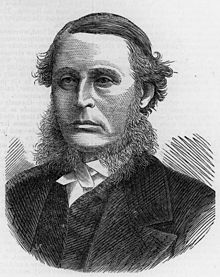- 1 2 Marks, E. N. (1969). "Cockle, Sir James (1819–1895)". Australian Dictionary of Biography . Canberra: National Centre of Biography, Australian National University. ISBN 978-0-522-84459-7. ISSN 1833-7538. OCLC 70677943 . Retrieved 9 March 2008.
- ↑ "Cockle, James (CKL837J)". A Cambridge Alumni Database. University of Cambridge.
- 1 2 3 4 Chisholm 1911.
- ↑ James Cockle at Dictionary of National Biography
- ↑ "Oakwal (entry 600345)". Queensland Heritage Register . Queensland Heritage Council. Retrieved 1 August 2014.
- 1 2 Carlyle 1901.
- ↑ UK Inflation (CPI) calculator
External links
Wikimedia Commons has media related to James Cockle .
 This article incorporates text from a publication now in the public domain : Carlyle, Edward Irving (1901). "Cockle, James". In Lee, Sidney (ed.). Dictionary of National Biography (1st supplement). London: Smith, Elder & Co.
This article incorporates text from a publication now in the public domain : Carlyle, Edward Irving (1901). "Cockle, James". In Lee, Sidney (ed.). Dictionary of National Biography (1st supplement). London: Smith, Elder & Co.- This article incorporates text from a publication now in the public domain : Chisholm, Hugh, ed. (1911). "Cockle, Sir James". Encyclopædia Britannica . Vol. 6 (11th ed.). Cambridge University Press. p. 627.
- John J. O'Connor & Edmund F. Robertson (2006) MacTutor Biography found on the MacTutor History of Mathematics archive.
- Bright Sparcs biography from the Australian Science and Technology Heritage Centre.
- Robert de Boer (2009) Mathematical Biography of James Cockle from WebCite.
- J. M. Bennett (2003) Sir James Cockle, First Chief Justice of Queensland, Federation Press, ISBN 1-86287-485-9 .
Sir James Cockle | |
|---|---|
 Sir James Cockle, first Chief Justice of Queensland, 1876 | |
| 1st Chief Justice of Queensland | |
| In office 21 February 1863 –24 June 1879 |